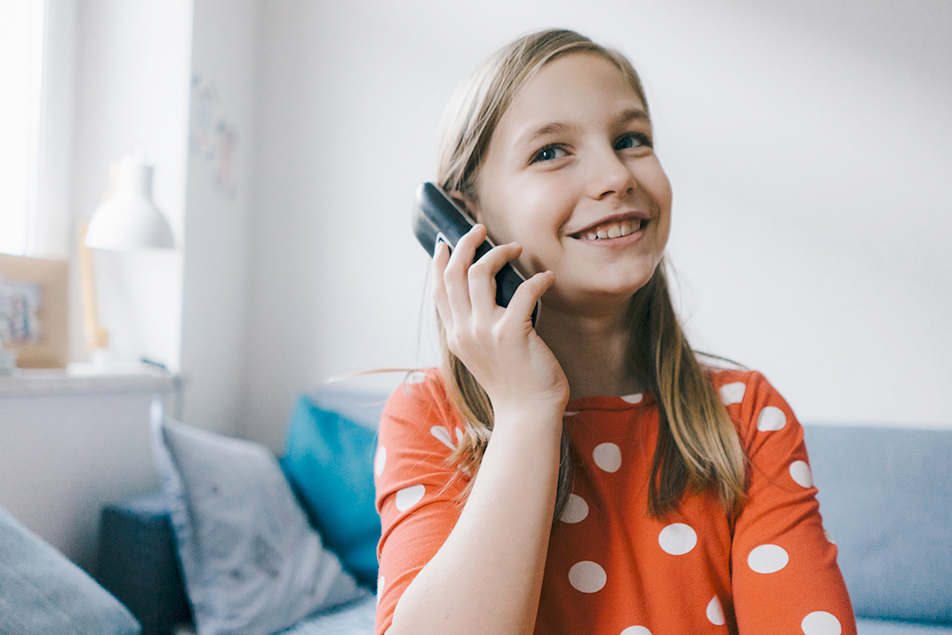
This post was written by Brandon T. McDaniel, PhD, research scientist, Parkview Mirro Center for Research and Innovation.
For those children (and adults) who often feel awkward or uncomfortable in social interactions, social distancing may have provided a nice break from all the stress and striving. Unfortunately, this also means that for many children who struggle with social anxiety, social distancing also removed them from some of the only experiences they had that required them to interact with others outside of their family.
Yes, of course, school and other closures were necessary. But, in a survey our research center distributed in March, many parents rated that the mental health of their children had suffered during social distancing, as many have been stuck at home with the ever-building anxiety of what life is going to be like after COVID-19.
A personal example
I don’t claim to understand those that have intense social fears or diagnoses. I chose a career path as an educator and researcher where, many times, I’m in front of people, presenting my ideas and work. So, in many ways, I have learned to be an “extroverted introvert”. However, let me be vulnerable for a minute. As a child, going to school and participating in extracurricular activities and camps forced me to be social in ways that I was not naturally inclined to do and at times I experienced social anxiety. I can remember the fear of raising my hand and saying the wrong answer. I can remember having to stand in front of others and present my project or ideas. I can remember sitting on the edge of the court watching my friends play a game I had never played before, wishing to play, but feeling too uncomfortable with all the mistakes I would make since I didn’t know how to do it. The only thing that pulled me into the game was a close friend dragging me on to the court.
Now, I watch my children who have struggled to adjust to a new school due to a recent move, but have begun to thrive, branch out, experience anxiety and overcome it by having to do things that seemed difficult, impossible or scary. Then, COVID-19 happened, and my children were ripped away from many of the opportunities that were pushing and pulling them to overcome their social fears. Yes, my kids are well-adjusted, happy and healthy overall, but I can see tendencies in them to choose the “easy path” over the socially uncomfortable path. This is especially true for one of my children in particular. Social distancing has made it easier and easier for this child to choose the easy path.
For example, we often talked about how we’re feeling and how online learning was going during social distancing. This child responded that they loved it because they didn’t have to interact with anyone in person. I also noticed that, over time, this child began to leave their camera turned off during class meetings so no one could see them, and they would only type their questions in the chatbox when many, if not all, of the other students, would simply ask the teacher during the video meeting. And, when summer camp got canceled, this child also expressed relief. Maybe you also have a child like mine—a good kid who tries hard but suffers from a lot of social anxiety. These suggestions might be helpful to you.
10 tips to help your socially anxious child
Now that our children may not have access to social-promoting activities like school, camp, sports, etc., it’s going to be even more important than ever that we, as parents, are there to help them become more socially competent. Here’s how …
- Be ready for your child to struggle to resume “normal” life and activities. If your child has been socially distanced from others for a few months now as my children have, they have likely fallen into some new routines and patterns. Change requires time, energy and dedication. It’s normal for your child to have fallen back into old habits, avoiding social situations or having difficulty interacting with others.
- Understand that your child likely has legitimate fears about health, safety or other COVID-related worries. Some of their anxiety now may also come from COVID-related worries. For instance, maybe they are worried about being around others because they might contract the virus. Or maybe they’ve heard all the messages about social distancing and feel very strongly that it’s wrong to even talk to others.
- Converse with your child about social anxiety. Help your child understand that feeling anxious is normal. Talk about the times you’ve felt anxious and what you’ve done to overcome those feelings.
- Have your child speak with their close friends and extended family via scheduled video chats (with the camera turned on). If children can’t meet in person due to safety and social distancing, you can keep your child connected to others via video chats. Also, it’s important to keep the camera turned to help simulate face-to-face time and interaction. If the child struggles too much with having the camera on, then try starting with only audio, but work your way up to a full video chat.
- Have your child do small things that are just outside of what they would normally do. As things open back up, and while you and your child practice the appropriate safety precautions like mask-wearing in public, just push them a little, but not so far that they crumble under the fear. For example, you might have them start small by making eye contact with people or smiling and waving at people. Even though people can’t see their smiles through the mask, it’s still a good habit to get into again. You could also have them practice making their doctor appointments over the phone or asking a neighbor for a cup of flour. The potential list is endless. If there’s something that’s difficult for your child, you can find creative ways to practice it.
- React to their anxiety with encouragement and sensitivity, not harshness and frustration. Your child will fail sometimes. They are going to experience fear and other emotions. Be there to emotion coach them, which includes helping them label and validate their emotions (“It sounds like you are feeling afraid right now.” “It can be really scary to talk to people we don’t know. I feel nervous sometimes too.”). You should avoid saying things like, “Why can’t you just do it?” “Don’t be a baby.” “This isn’t hard.” “Look how easy that was for your brother!” This is hard for them. The sooner you come to terms with it and help them work through it, the better!
- Don’t promise your child “It will be OK” or “Nothing bad is going to happen.” This isn’t helpful because something negative could happen and might occur in some social situations. You’re trying to teach your child how to cope with possible negative life experiences.
- Have them practice. To overcome anxiety, one must repeatedly face the fear-inducing experiences or activities. Of course, you don’t want to throw them into something that’s above what they can accomplish. But, if you believe you have found something that’s slightly above what they’re comfortable with, keep having them try. It will become easier over time. It may never become enjoyable to them, but it can become easier. You can also role-play, practice at home or with others to help prepare your child on what to do in the moment. You want them to focus on making progress, not being perfect.
- Don’t rush in to save your child every time they struggle. Let your child experience anxiety. You can prepare them beforehand, teach them strategies, emotion coach them and choose scenarios you believe are just above their current comfort level, but after that, you need to let them work through the experience on their own. If you always rush in to save them, then this reinforces the avoidance of such experiences in the future. Of course, if you sense a complete meltdown or a panic attack, then stepping in may be necessary. If this occurs, do not solve the issue at hand for them. Instead, focus on giving the child a break, helping the child to calm down and remember their coping skills. Then, encourage them to try again.
- Seek help from a mental health professional. If you don’t know what to do and/or your child’s fear and anxiety seem to be crippling them, a mental health professional may be needed.
The Anxiety and Depression Association of America is a helpful resource for treatment, but you can also call the Parkview Behavioral Health Helpline at 260-373-7500 or 800-284-8439, 24 hours a day, to talk to a healthcare professional about how and where to find local support.



